Weather and climateThe Arctic islands are characterised by a range of climates. The most extreme is the dry continental climate of the interior of the Greenland ice sheet, and some favoured eastern fjords, while other areas a relatively mild, with a strong maritime influence, such as Svalbard. Inevitably, we depict the Arctic in the most favourable weather conditions, but at least the photographs in this section give an indication of the range of conditions experienced by the visitor, albeit mostly in summer. |
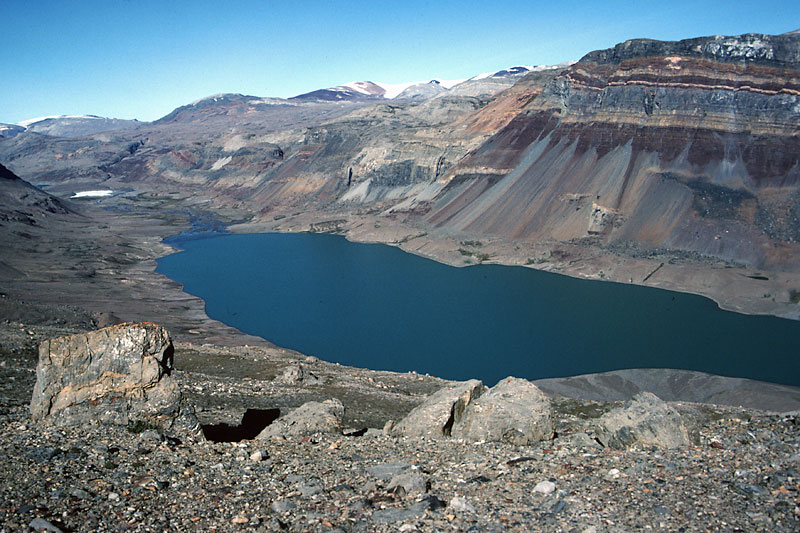 Probably the best summer weather in the Arctic occurs in East Greenland,informally known as the ‘Arctic Riviera’. Anticyclonic conditions give rise to clear blue skies; these may persist for several weeks. Precipitation is low and glaciers exist only at high elevations. | 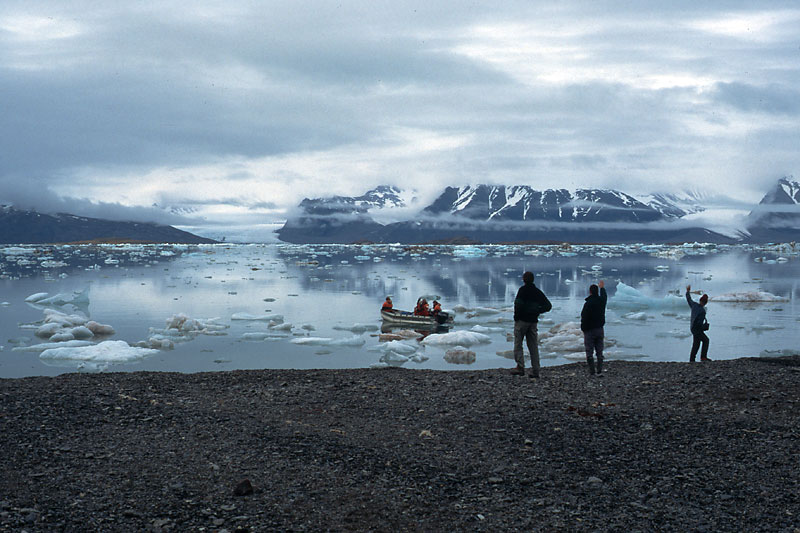 Coastal fog may persist for many days in maritime areas such as Spitsbergen, but then may lift to form low clouds, at which point drizzle begins to fall. Dull, calm days like this are typical of weather conditions during the summer in Spitsbergen. | 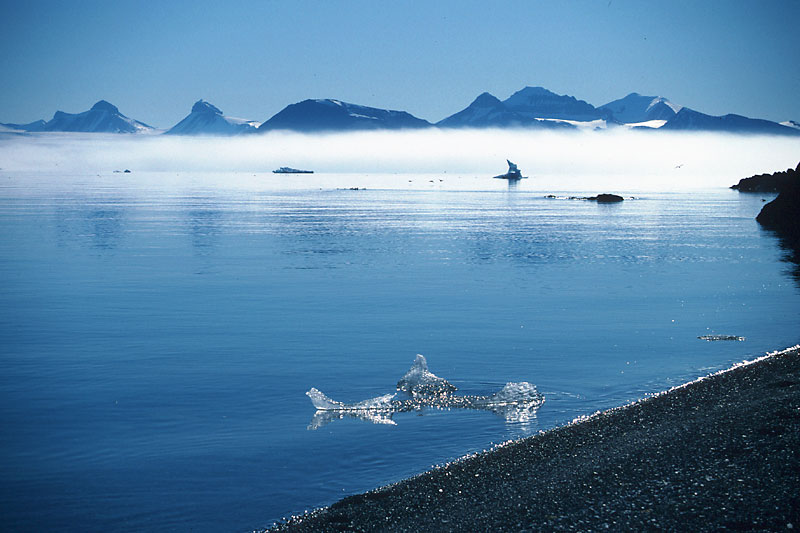 Thick banks of fog, formed offshore, build up during the summer ‘nights’ and extend into the inner reaches of fjords. If you are lucky, the fog burns off during the day as in Kongsfjorden, NW Spitsbergen. | 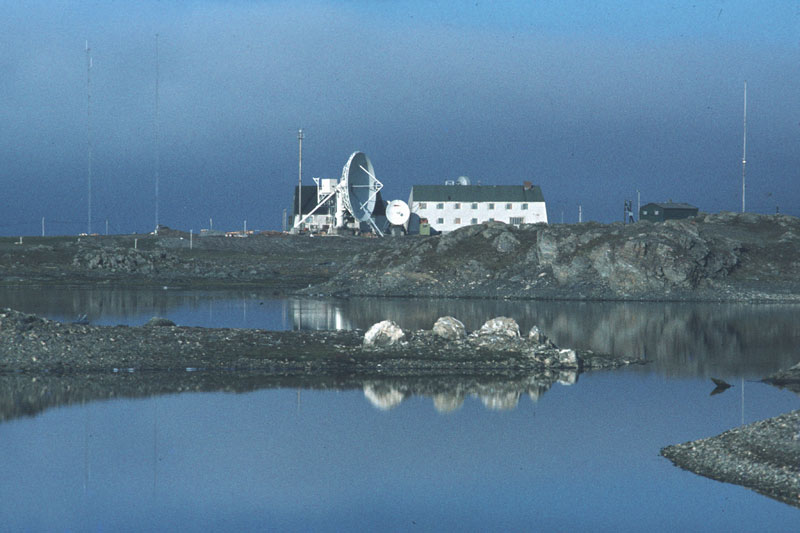 A low evening sun illuminates the Isfjord Radio weather station in Spitsbergen against a dark background of fog. This station is located at the southern entrance to the fjord. Spitsbergen has one of the longest running meteorological records in the Arctic, spanning 90 some years. |
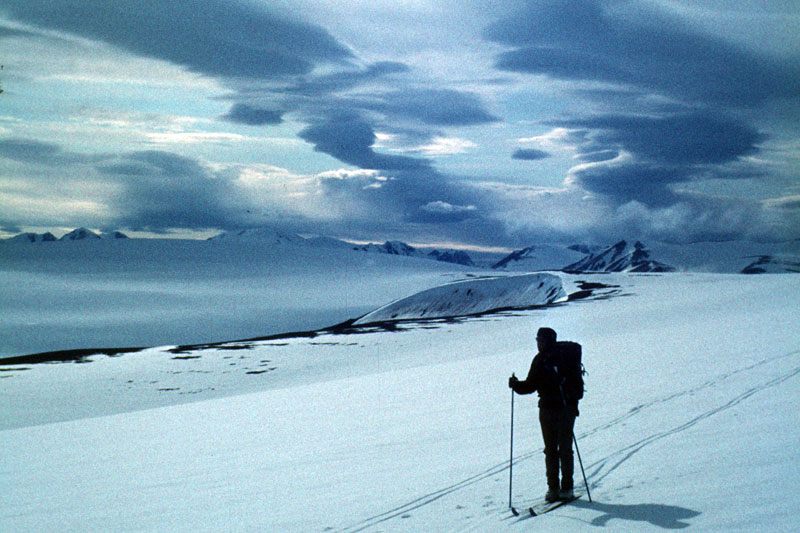 Lenticular clouds above the icefield of Lomonosovfonna, north-east Spitsbergen indicate high winds aloft and the imminent arrival of blizzard conditions. Sometimes known as hogsbacks, these clouds form over high ground and remain stationary. | 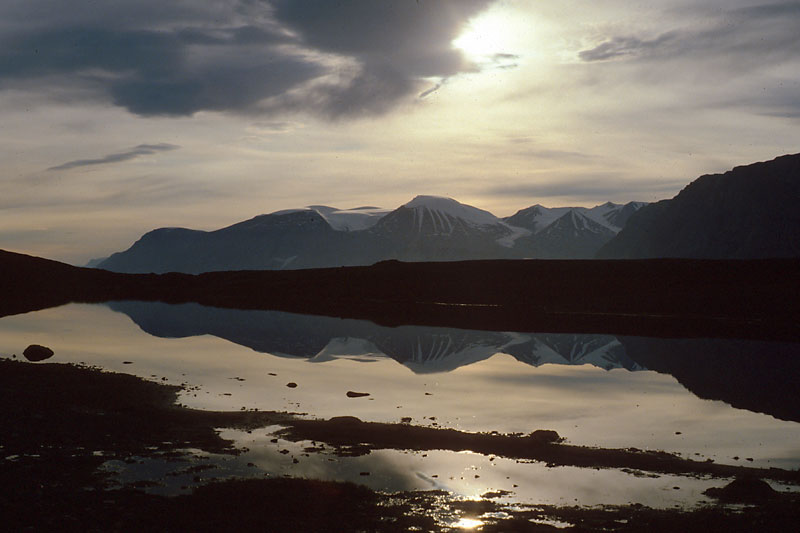 Life in the Arctic benefits from the persistence of the midnight sun in high summer. Here, on the island of Ella Ø in East Greenland, the midnight sun causes the surrounding glacier-capped mountains to be reflected in a small lake. | 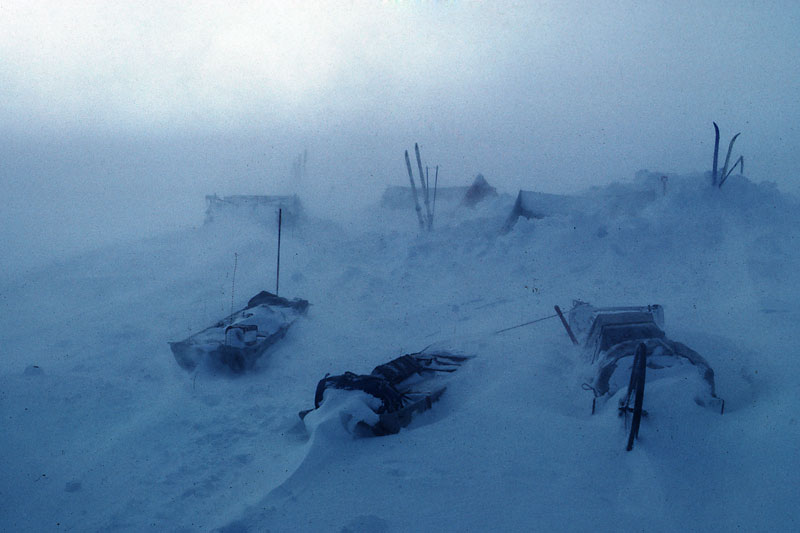 Blizzard conditions can occur at any time of the year in the Arctic, especially at elevations above 500 m. Here a geologists’ camp at 1000 m on Wilsonbreen in north-east Spitsbergen has become almost buried by a July blizzard that lasted 3 days. | 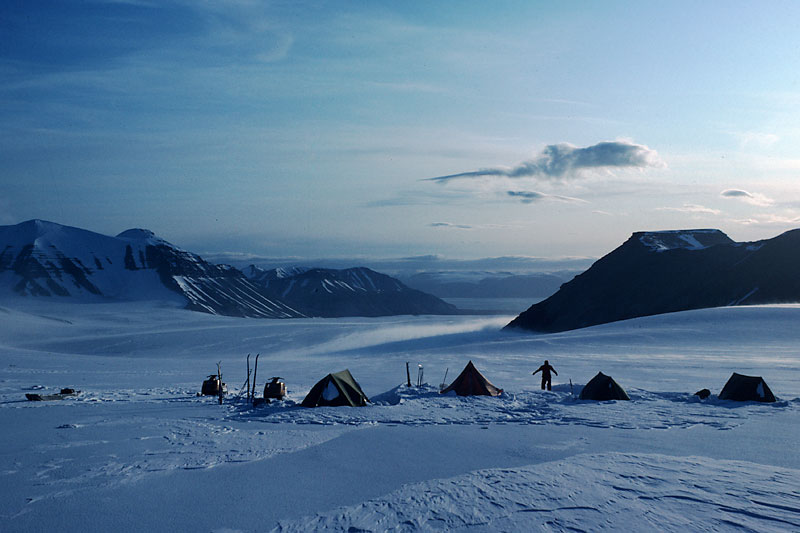 Scientists here are emerging from their camp after a mid-summer blizzard, as eddies of wind-blown snow hurtle down glacier in the distance. Although much of the surface was swept clear of snow, the camp has attracted a large drift, even though the tents are widely spaced to avoid burial. |
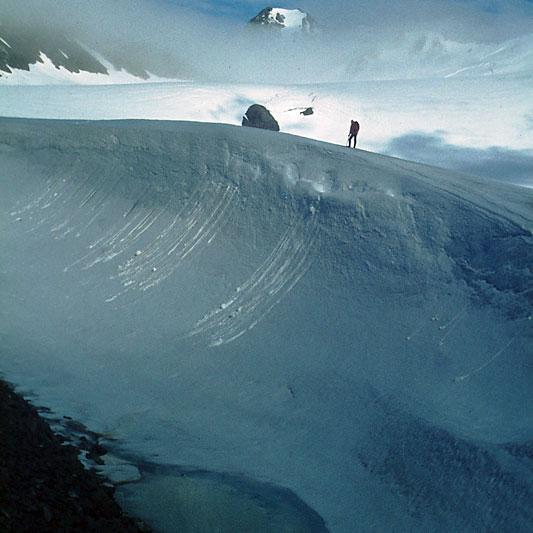 Wind is an important factor in controlling the distribution of snow. At its most extreme wind carves out clefts between the glaciers and rock walls at high elevations, called wind scoops. This example borders the glacier Haakenbreen in western Spitsbergen. | 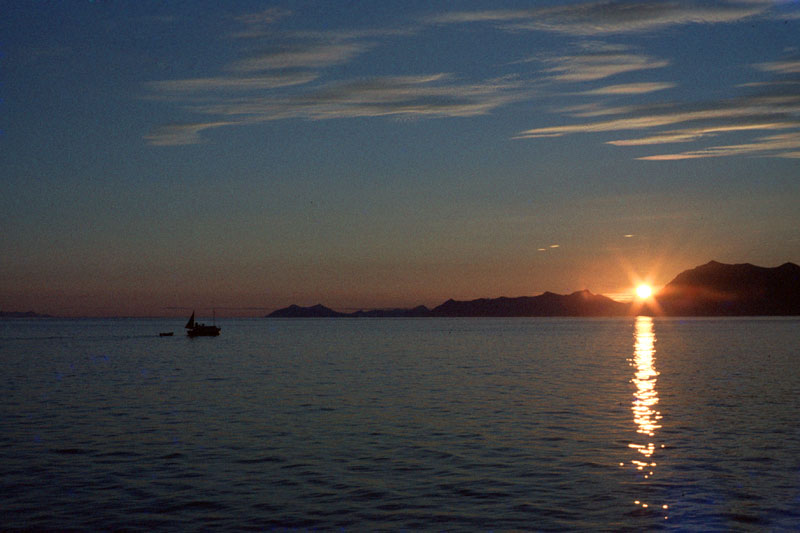 Late August sees the disappearance of the midnight sun for the first time (if not otherwise obscured by cloud). Here a Cambridge University motor boat is sailing past the mouth of Isfjorden, as the midnight sun dips behind the mountains to the north. | | |